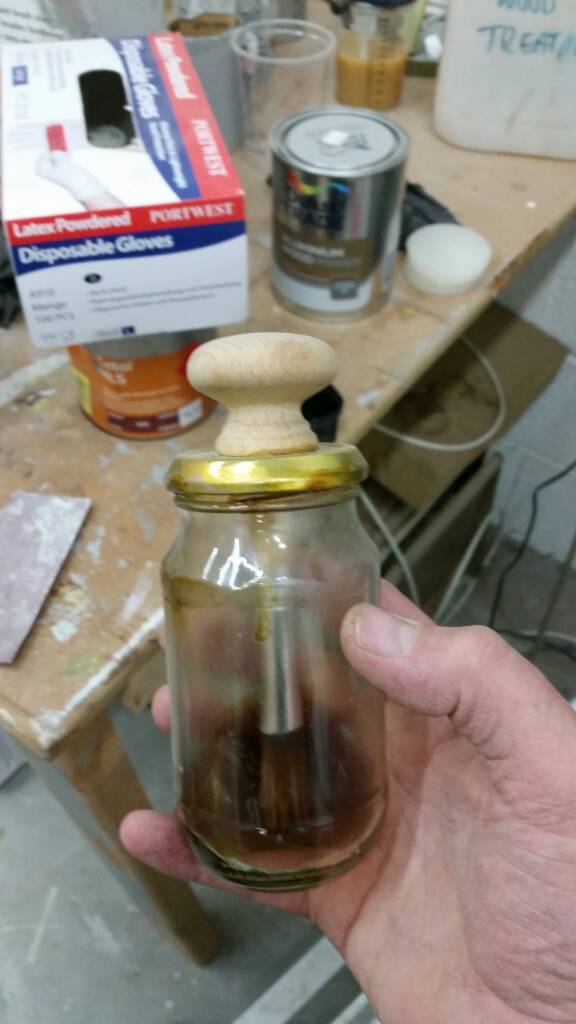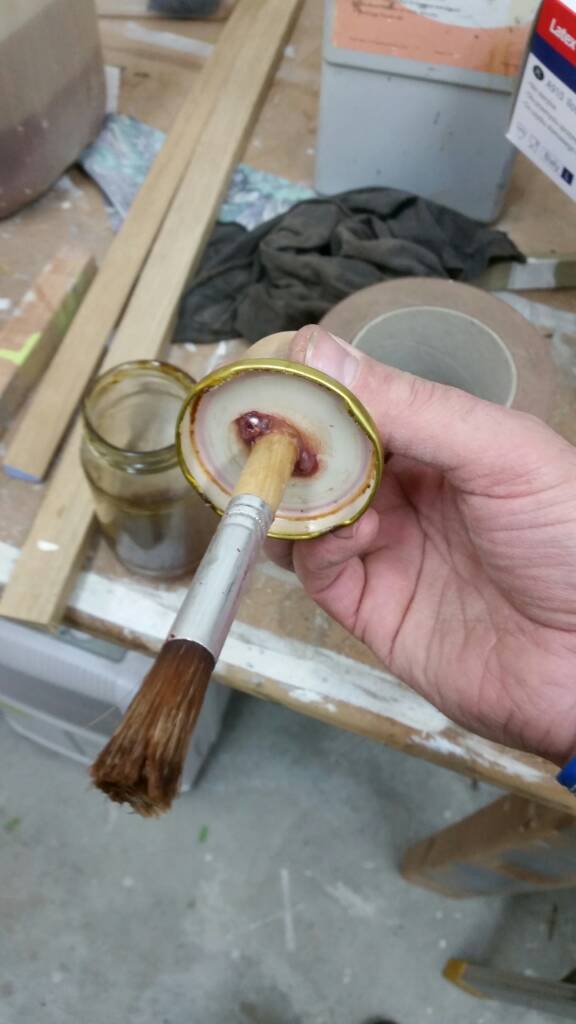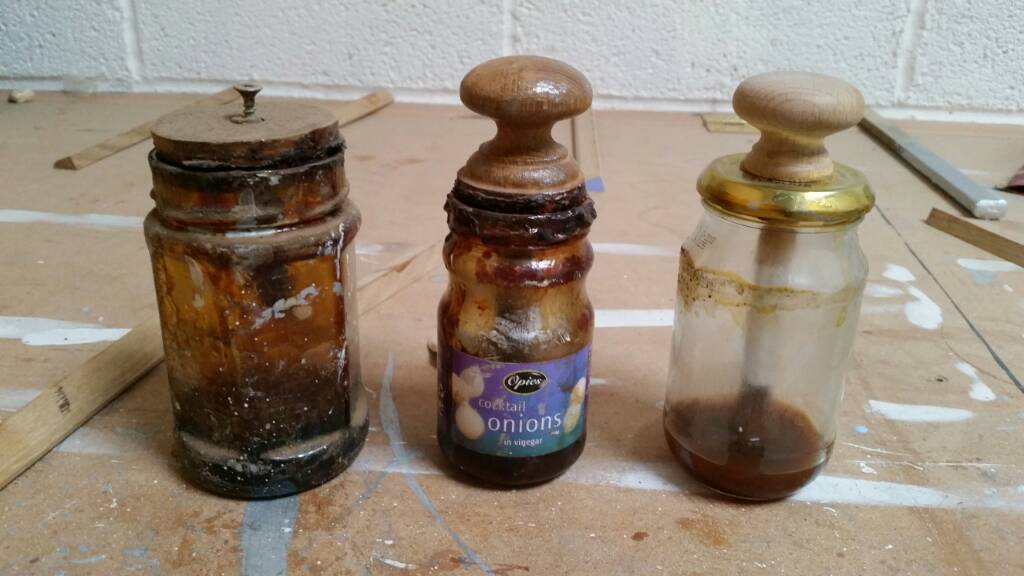Honest John
Established Member
I seem to be forever picking up used paper towels and putting them in the bin. The most common materials I use in my lathe work are sanding sealer both cellulose and acrylic. The acrylic is mainly because I can’t get away with using cellulose sanding sealer without comment from SWMBO. I also tend to like to use shellack as that is also less confrontational on the domestic front. I’m thinking of using some recycled glass jars by epoxying natural bristle sash brushes into the lids to hold these products. My thinking is that by keeping the brush in the product, I don’t have to wash the brush, and I can easily top up and dilute the products in the ready to use jars. Is this a good idea do you think, or am I starting a rocky road to a gummy disaster?




































